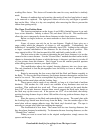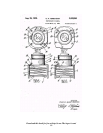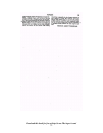Download this book for free at http://www.TheArgusA.com/
67
10 For More Information
Throughout the years, much has been written about 35mm cameras, their use, and their
repair. The author has enjoyed many of these books and would like to point out several
that stand out from the crowd.
The best history of American 35mm development and the early evolution of the
35mm camera is Glass, Brass, & Chrome: The American 35mm Miniature Camera, by
Kalton C. Lahue and Joseph A. Bailey. Reprinted in 2002 by the University of
Oklahoma Press, this book is obviously a labor of love. Lahue and Bailey outline all of
the major American-made 35mm trends, companies, and camera models from the early
thirties to the early seventies. In addition to the Argus A cameras, this book also covers
other cameras by Argus, UniveX/Universal, Kodak, Perfex, Bolsey, Kardon, Bell &
Howell, Realist, and a host of others. The book ends on a comical note: the authors
lament the probable demise of 35mm film in favor of the then-growing but now-defunct
126 cartridge. Writing in the early 1970s, the authors probably intended the book as a
eulogy for 35mm photography. Who suspected that it would remain a dominant force in
photography for at least another thirty years?
If you want to learn about cameras in general, the best text on the subject is the
first book in Ansel Adams’ three-volume “Photography Series”. Simply named The
Camera, it covers every aspect of the camera, from lenses to shutters to film formats and
beyond. This professional and timeless text demystifies many of the secrets behind the
intricacies of a camera and how to take advantage of them.
If looking to learn about camera repair, an outstanding text on the matter is
Edward H. Romney’s Revised Basic Training In Camera Repair. Romney discusses
every aspect of camera repair and calibration. Of particular value are Chapter 5 (Testing
and Adjusting Shutters) and Chapter 6 (Testing Sharpness of Lenses and Cameras . . .
Adjusting Focus). These two chapters each approach their topic by looking at
inexpensive ways to accomplish difficult tasks. The simplicity and usefulness of the
techniques described is truly amazing. You can buy this book straight from the author at
www.edromney.com.
If you want to learn how to take a good picture, pick up a copy of the National
Geographic Photography Field Guide by Peter K. Burian and Robert Caputo. This book
does a good job of covering the basics of photography, from cameras to film to subjects.
It is also small enough to fit in a camera bag.
As mentioned earlier, any of Kodak’s “How To Make Good Pictures” books are
excellent for vintage photographic information. They offer a good look at the state of
amateur photography at the time of printing.
Another outstanding, and free, source of information about Argus cameras and
photography is the internet. The most notable Argus-oriented web page is the Argus
Collector’s Group (ACG) page. Located at http://arguscg.tripod.com/acg/index.html, the
ACG collects and makes available all sorts of information about Argus cameras. They
also run a particularly lively e-mail-based mailing list on Yahoo! Groups at
http://groups.yahoo.com/group/arguscg/.


















